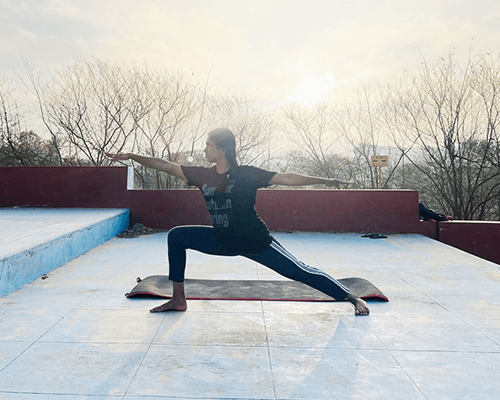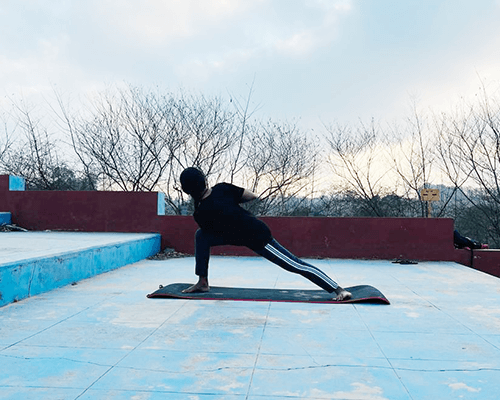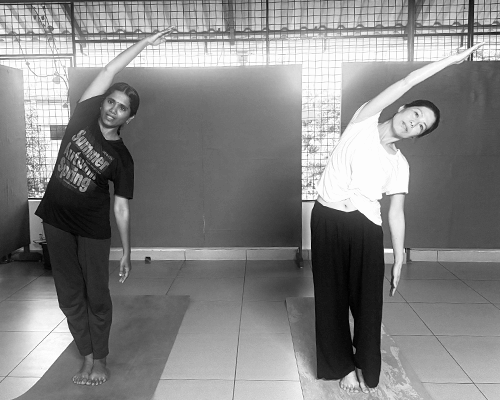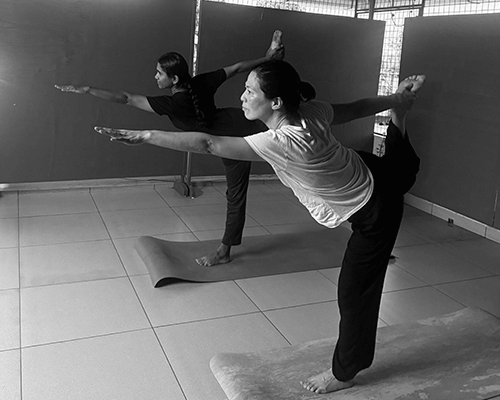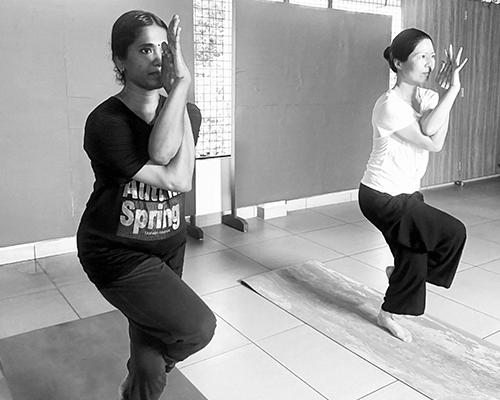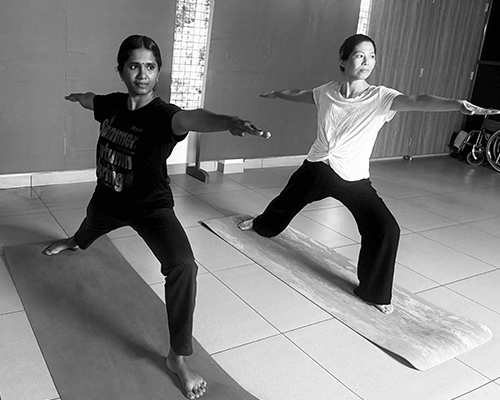Resolve your health challenges with us. Experience ayurvedic rejuvenation like never before!
Overcome your health issues with us. Enjoy unmatched Ayurvedic rejuvenation!
Experience unique Ayurvedic rejuvenation!
Enjoy unmatched Ayurvedic rejuvenation!
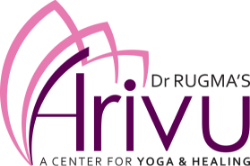
According to Bhagavad Gita,
“Samatvam Yogah Ucyate” (2.48) “Yogah Karmasu Kousalam” (2.50) ‘Yoga is maintaining relaxation and awareness in every action.’ Yoga is a systematic process for accelerating the growth of a person in their entirety. With this growth a person learn to live at higher states of consciousness. The key to this all round personality development and growth is the culturing of mind through Yoga.
According to Swami Vivekananda,
-‘Each man is potentially divine’ to manifest this belief by internal, external and natural means or also by work,, workship, philosophy or psychic control; by one or more or all of these to be ’Free’.
According to Sri Aurobindo - ‘Yoga is a technique for total personality development at physical, mental, emotional and spiritual levels.’
‘Yoga’ means ‘Unity’ or ‘Oneness’ and is derived from the word ‘Yuj’ which means ‘to join’, ’to bind together’. Unity means the joining of individual consciousness with the universal consciousness. Yoga allows for an integration and harmony of body, mind and soul.
As indicated by sage Patanjali
"Yogah Chitta Vritti Nirodha" (Pathanjali Yoga Sutra:1.2)
To block the patterns of the consciousness is Yoga. There for Yoga is a process of gaining control over the mind. This is very much the bedrock of yogic philosophy which can easily be used by the common man – to find peace of mind –to go beyond the realms of petty jealousies, worries, resentments, revenge and other negative emotions.
Sage Vasistha says that
“Manah Prasamanopayah Yoga Ityabhidhiyate” (Yoga Vasistha:3.9.32)
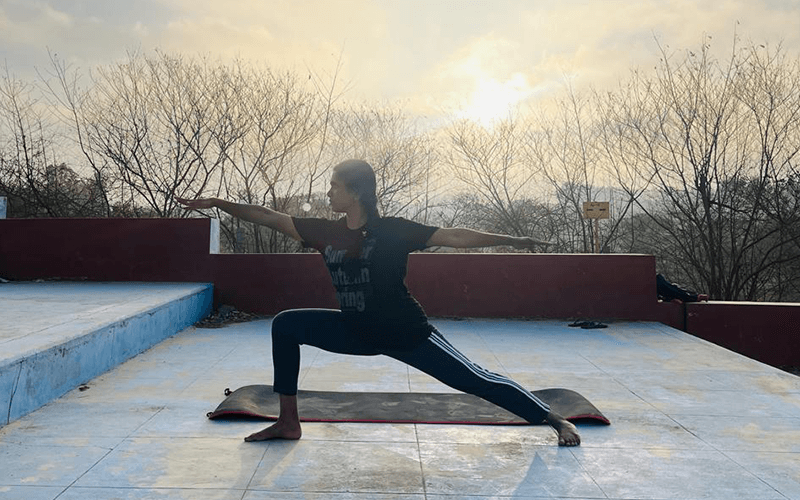
History of Yoga and its Origin
The origin can be track over 5000 years to ancient India, where it was developed as a spiritual practice by the Indus – Saraswati civilization. The earliest written records of yoga come from the ancient Indian text called the Vedas, which date back to around 1500BCE.
Over time, it has evolved into a complex system of physical, mental and spiritual practices that were passed down from teachers to students. The most influential of these teachers was Pathanjali, who wrote the Yoga Sutras around 200BCE .The Yoga Sutras provided a comprehensive framework for the practice of Yoga, including the eight limbs of yoga, which are still used as a guide for yogic practice today.
Throughout history, Yoga has been practiced by various religious groups including Hindus, Jains, Buddhists. In the 19th and early 20th centuries, it began to gain popularity in the west, thanks in part of the effort of influential teachers such as Swami Vivekananda and Paramahamsa Yogananda.
Pathanjali’s Ashtanga Yoga
Patanjali’s Ashtanga Yoga is the path outlined in the sacred text of classical yoga the ‘Yoga Sutra’. It refers to eight limbs
Yama – “Moral restrictions”
It involves five guidelines for interaction with the external world
- Ahimsa – Non-harming
- Satya - Truthfulness
- Asteya - Non theft
- Bramacharya – Control of the Sexual energy
- Aparigraha – Greedlessness
Niyama – “Moral Disciplines”
It involves five guidelines regarding the interaction with the “inner world”
- Saucha – Purity (mind, body, action)
- Santosha – Contentment
- Tapas - Spiritual Austerity/Self Discipline
- Svadhyaya – Spiritual study
- Iswarapranidhana – Devotion to the Lord
Asana – “Yoga postures”
Asana is a “ posture”(In particular, a Yoga pose) or ‘seat’. The practice of asana is not only for the benefit of physical body, but also for cultivating a deep meditative state in which the body mind and soul are brought in to beautiful state of harmony.
Pranayama – “Control of the Breath”
Pranayama refers to the regulation and control of energy through the breath, the expansion of the vital energy, and extension of the breath. Etymologically pranayama means “awareness and extension of prana”, it is the 4th rung of Patanjali’s Ashtanga Yoga and an important part of Hata Yoga. Pranayama is more than mere breathing exercises, as it requires constant awareness and concentration to control the otherwise irregular breathing patterns.
Shankaracharya offers a purely spiritual explanation of pranayama:”Emptying the mind of all illusions is the true rechaka, exhalation. The understanding ‘I am atman, the eternal spirit’ is the true puraka, inhalation maintaining this faith without sease is the real kumbhaka, retention. This is the true pranayama “this highest form of pranayama is metaphorically called jnana yoga pranayama .
Prathyahara - “The withdrawal of the senses”
Prathyahara “ to pull from” and refers to the idea of pulling the senses away from their objects of desire, withdrawing them inward and developing a deep sense of internalization . With prathyahara, we learn to develop control over the senses. It involves the reorientation of the senses from an external to internal flow, allowing us to become aware of our own desires, fears and thoughts. The energy that was given to the senses in the seeking of pleasure is regained and focused on the calming of the mind.
Dharana - “Conscious hold”
Conscious hold when applied to the mind. Correlated to ‘dharana’. Binding the Chitta (The Mind) in a particular space is dharana. In normal terms, this is “focus”. It is characterized by effort . This effortful focusing of the mind on particular mental content helps to let go of the mental content/patterns that one was unconsciously holding in to.
Dhyana – “Meditation”
There (in Dharana) uninterrupted flow of the same mental content is dhyana. We can say that for the hold/dharana to become continuous and steady, it should become effortless. Thus we move from unconscious holding (tamas) to conscious effortful holding (rajas) and then to conscious effortless holding (sattva).
In dhyana, the flow of attention on a gross or subtle object continues spontaneously and without force – we have moved from effort to effortlessness and the object of concentration is now an object of deep fascination.
Samadhi
When dhyana is prolonged, Samadhi result. Samadhi is absorption into the object of meditation.
As B.K.S Iyengar describes, in Samadhi the individual soul merges with Universal Soul. This union transcends intellectual understanding, for it is direct experience of our interconnectedness with all that is. In Samadhi, distinctions between self and other disappear, and we experience reality as it truly is.
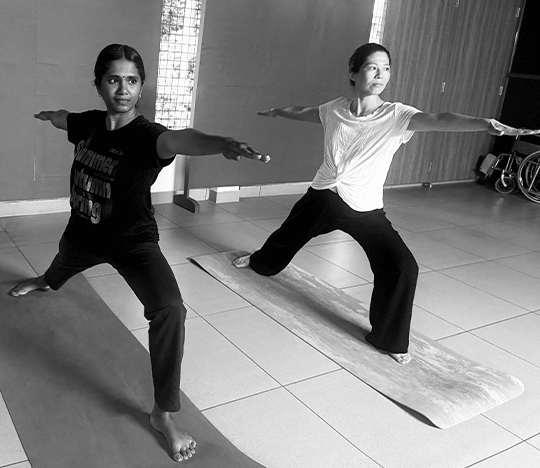
Integrated approach of Yoga
The integrated approach of yoga therapy (IAYT) model developed by (S-VYASA) is based on the principle that “the root of all psychological illness is in the mind; which causes an internal imbalance due to long standing stressful and demanding situations of life”. Intense surges of uncontrolled excessive speed of responses to these demanding situations at an emotional level (Manomaya kosa), conflicts between value systems (vijnanamaya kosa) and strong likes and dislikes at the psychological level (Manomaya kosa) are responsible for imbalances at gross levels (Pranamaya and Annamaya kosa).
(IAYT) slows down the loop of uncontrolled speed of thoughts (stress) through several techniques that use the principle of “successive stimulations followed by progressive relaxation and the rest” to correct the imbalances, promote “mastery over the mind” and harmonize the (IAYT) disturbances at each of the five levels (Pancha kosa). Based on the above Panch kosa concept, the (IAYT) model incorporates varied yogic practices at each level to help patients with different disorders deal with their problems.
Pancha Kosas(Five layers/ Five Sheaths)
Vedanta explores the human individuality into five layers/sheaths (kosas). It reveals the basic elements that give the macrocosm and microcosm framework. It teaches us about the mechanism of the body, mind and spirit from the gross elements that make up the physical body to the more subtle aspects of the mind and consciousness.
Concept of panchakosa originated from Taittireya Upanishad. It describes five stratum of the consciousness in the world.
- Annamaya Kosa: Gross physical appearance/physical sheath.
- Pranamaya kosa: Vital life force/vital sheath i.e Breath
- Manomaya kosa: Mental and emotional status/ Mental sheath
- Vignanamaya kosa: Subtle knowledge/wisdom sheath
- Anandamaya kosa: State of eternal freedom/Bliss body

